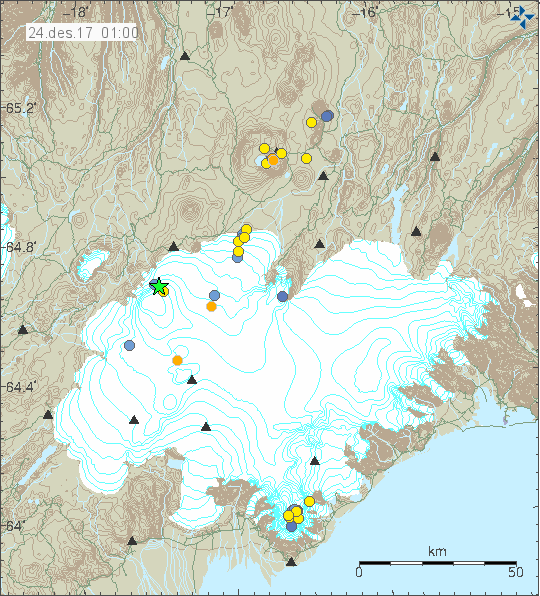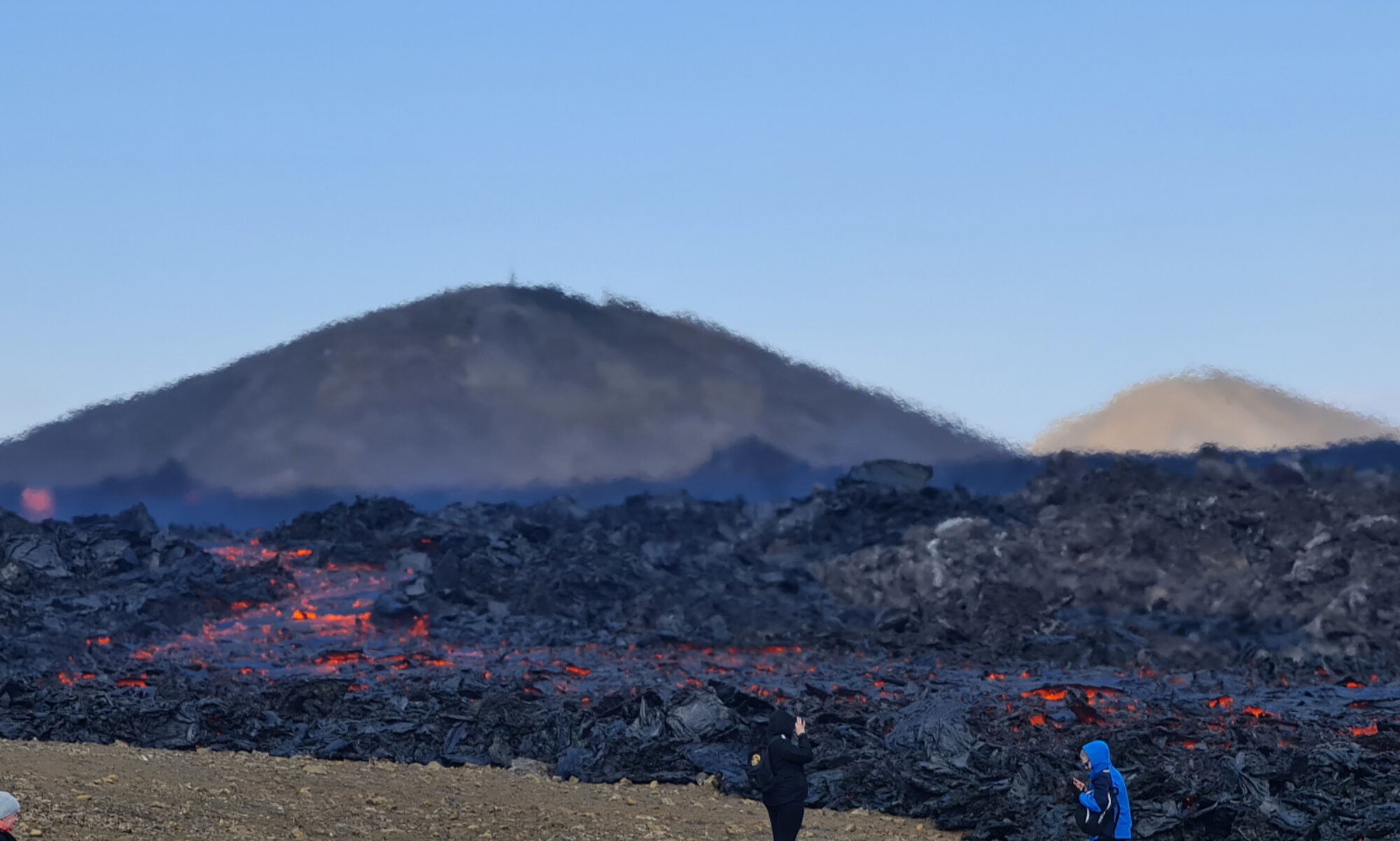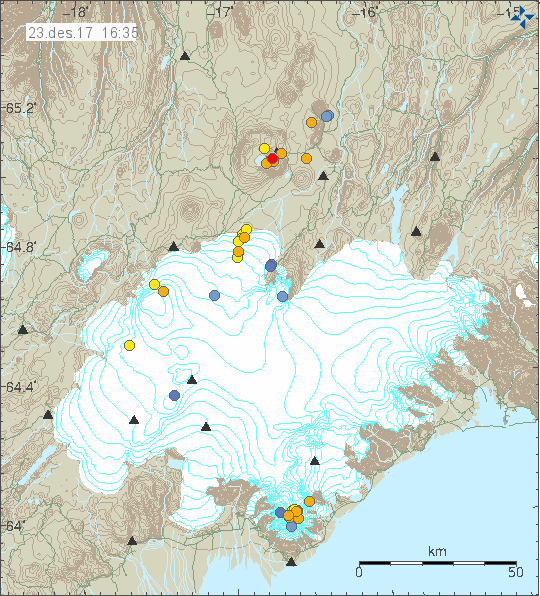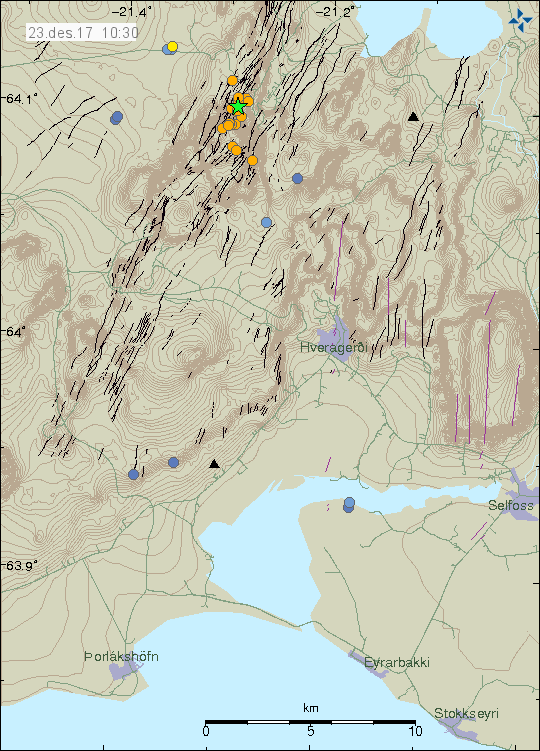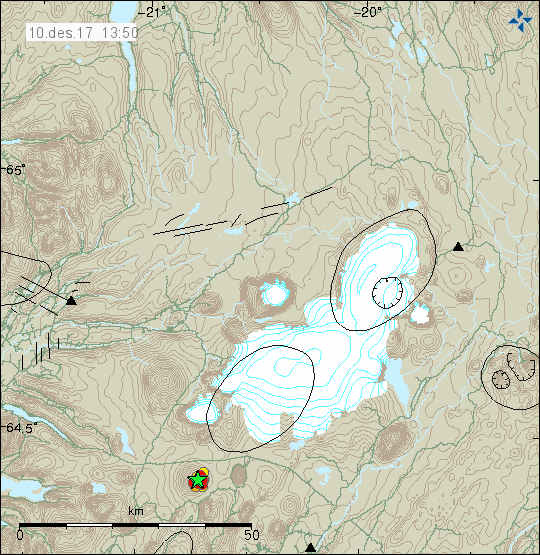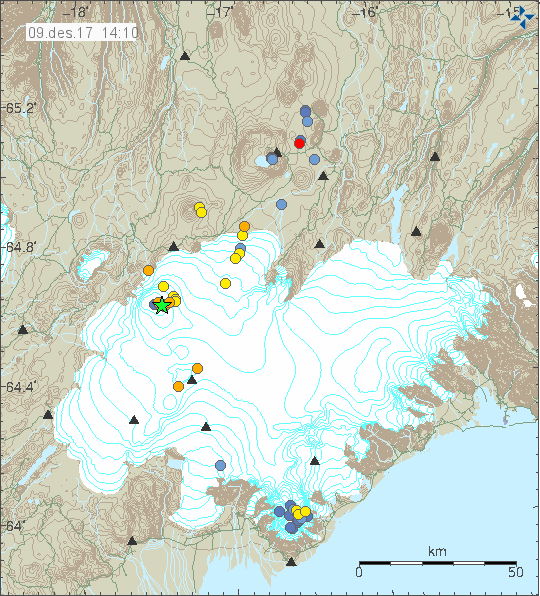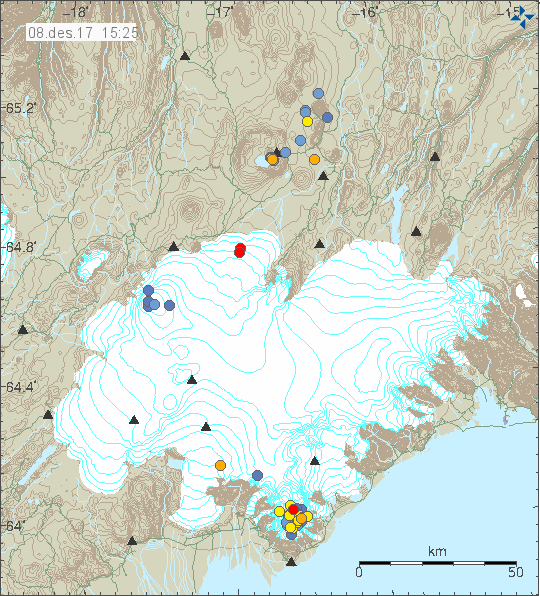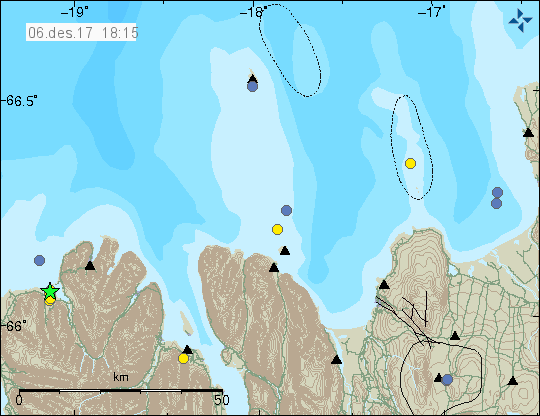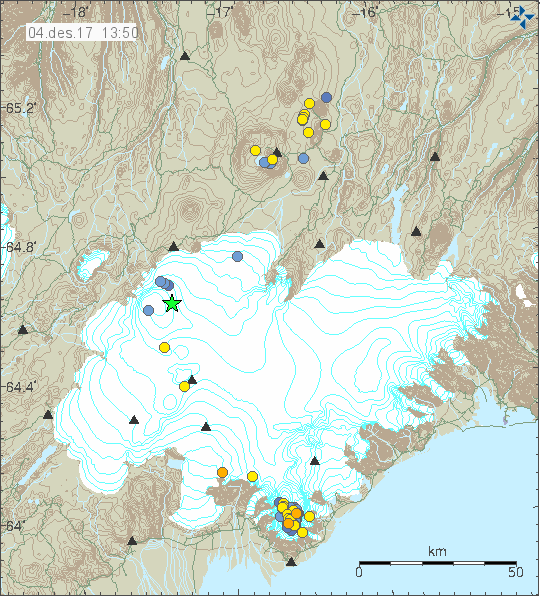During the night of 20-December-2017 an earthquake swarm started in Bárðarbunga volcano. This earthquake swarm started at 02:17 UTC with a magnitude 1,4 earthquake. The first magnitude 4,1 earthquake took place at 04:57 UTC and the second large earthquake took place at 05:29 UTC and had the magnitude of 4,4. All other earthquakes where smaller in magnitude and around 40 to 48 earthquakes happened.
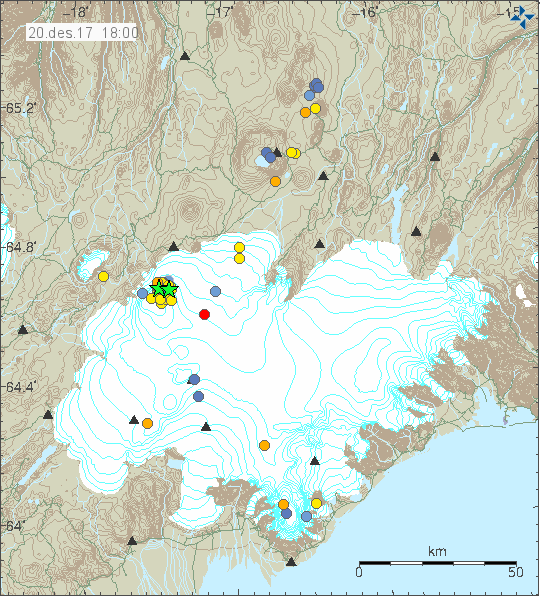
Earthquake activity in Bárðarbunga volcano. Green stars show the location of the earthquake activity in Bárðarbunga volcano. Copyright of this image belongs to Icelandic Met Office.
This earthquake activity was in the usual north-east part of the caldera of Bárðarbunga volcano. Currently hydrothermal activity is high and remains high in Bárðarbunga volcano. That means there is serious amount of magma inside Bárðarbunga volcano at shallow depth. That has not resulted in any small eruptions at the moment but that might change without warning (watch out for small magnitude focused earthquake activity).
Deep earthquake activity continues south-east of Bárðarbunga volcano (red dot on the image). That is magma movement but that activity doesn’t appear to be getting any shallower at the moment. That activity is focused in one location and might be high risk for an eruption in the future.
Donations
Please remember to support my work with donations. Everything helps. Thanks for the support. 🙂
